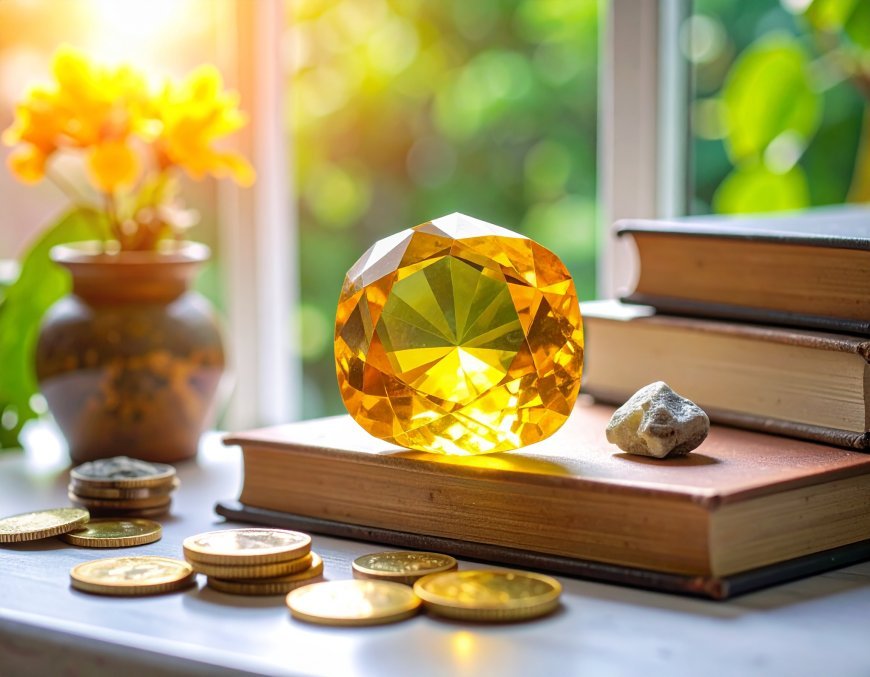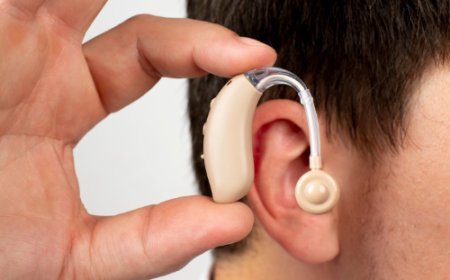Yellow Sapphire Price: Understanding Value, Quality, and Market Trends

Yellow sapphire is one of the most sought-after gemstones in the world, prized for its vibrant color, durability, and astrological significance. Whether you're a jewelry enthusiast, an investor, or someone looking to purchase a yellow sapphire for personal reasons, understanding yellow sapphire price is crucial. This comprehensive guide will help you navigate the factors that influence pricing, how to evaluate quality, and current market trends.
What Is a Yellow Sapphire?
A yellow sapphire is a type of corundum, just like rubies. The presence of trace elements such as iron and titanium gives it its distinctive yellow hue. While sapphires are commonly associated with blue, they come in a wide range of colors, including pink, green, and, of course, yellow. The intensity of the yellow color can vary from pale lemon shades to deep golden tones.
Yellow sapphires are often used in rings, pendants, earrings, and other fine jewelry pieces. In Vedic astrology, yellow sapphires (also known as "Pukhraj") are associated with the planet Jupiter and are believed to bring wisdom, prosperity, and good fortune.
Why Yellow Sapphire Price Matters
The yellow sapphire price can vary widely depending on several key factors:
- Color Intensity
- Clarity
- Cut
- Carat Weight
- Origin
- Treatment
- Market Demand
Let’s explore each of these in detail.
1. Color Intensity: The Most Influential Factor
Color is arguably the most important determinant of yellow sapphire price . A rich, vivid yellow hue without any brownish or greenish overtones commands the highest prices. Sapphires with a pure yellow color are rare and highly desirable.
Gemological laboratories classify yellow sapphires based on their tone and saturation. Stones with medium to strong saturation and light to medium tones are generally considered ideal.
- Fancy Yellow Sapphires : These have deeper, more intense colors and may be priced higher than lighter stones.
- Golden Sapphires : Often exhibit a mix of yellow and orange hues; while beautiful, they might be priced slightly lower than pure yellow sapphires.
2. Clarity: Eye-Clean vs. Included
Like all gemstones, clarity plays a significant role in determining yellow sapphire price . Most natural sapphires contain some inclusions — tiny internal features that formed during the stone's creation. However, eye-clean sapphires (those without visible inclusions to the naked eye) are much more valuable.
Common inclusions in yellow sapphires include:
- Silk (fine rutile needles)
- Feathers
- Mineral crystals
High-quality sapphires with minimal inclusions are rare and thus more expensive.
3. Cut: Enhancing Beauty and Brilliance
A well-cut yellow sapphire enhances the stone's brilliance, symmetry, and overall appearance. Poorly cut stones may appear dull or lifeless, even if they have excellent color and clarity. Popular cuts include round, oval, cushion, princess, and emerald shapes.
Skilled lapidaries can maximize the color and sparkle of a yellow sapphire through precise cutting techniques. As a result, better cuts usually command higher prices.
4. Carat Weight: Bigger Isn’t Always Better
As with most gemstones, yellow sapphire price increases with carat weight. Larger stones are rarer than smaller ones, especially in high-quality grades.
However, two sapphires of the same carat weight can differ significantly in price due to variations in color, clarity, and cut. It’s essential to consider all four Cs (color, clarity, cut, and carat) when evaluating value.
Here’s a rough idea of yellow sapphire price per carat based on quality:
- Low Quality (Included, Pale Color) : $50–$150/carat
- Medium Quality (Good Color, Minor Inclusions) : $200–$500/carat
- High Quality (Vivid Color, Eye-Clean) : $600–$1,500/carat
- Very High Quality (Rare Vivid Yellow, No Inclusions) : $2,000+/carat
Prices can fluctuate depending on origin, certification, and market demand.
5. Origin: Where Was the Sapphire Mined?
Sapphires from certain regions are more prized due to their historical reputation and superior quality. Some notable sources of yellow sapphires include:
- Sri Lanka (Ceylon) : Known for producing high-quality sapphires with excellent color and clarity. Ceylon sapphires often command premium prices.
- Thailand : Produces darker yellow sapphires that may require heat treatment to enhance color.
- Madagascar : Recently emerged as a major source of fine sapphires, including yellow varieties.
- Burma (Myanmar) : Famous for rubies, but also produces exceptional sapphires.
Sapphires from Sri Lanka and Madagascar tend to be more expensive due to their superior aesthetics.
6. Treatment: Heat-Treated vs. Untreated
Most yellow sapphires undergo heat treatment to improve their color and clarity. This process is stable, permanent, and widely accepted in the gem trade. However, untreated sapphires are extremely rare and highly valued.
If a sapphire has been treated, this must be disclosed by the seller. Untreated yellow sapphires can cost up to 2–3 times more than treated ones of similar appearance.
Always ask for a certificate from a reputable lab like GIA, IGI, or GRS to verify whether the stone has been treated.
7. Market Demand and Trends
The yellow sapphire price is also influenced by global market trends and consumer preferences. Over the past decade, there has been growing interest in colored gemstones as alternatives to diamonds, which has boosted demand for sapphires.
Additionally, the popularity of yellow sapphires in engagement rings and celebrity fashion has further increased their desirability. This rising demand has led to upward pressure on prices, particularly for top-grade stones.
How to Buy Yellow Sapphires Smartly
When shopping for a yellow sapphire, follow these tips to ensure you get the best value:
1. Get Certified Stones
Always buy stones certified by reputable labs like GIA, IGI, or GRS. Certification ensures transparency about the stone’s quality and any treatments.
2. Compare Prices
Shop around and compare prices across different vendors. Be wary of unusually low prices — they may indicate poor quality or synthetic stones.
3. Consider Lab-Grown Options
Lab-grown yellow sapphires offer the same physical and optical properties as natural ones but at a fraction of the cost. They are an ethical and affordable alternative.
4. Understand Your Budget
Decide your budget beforehand and prioritize what matters most to you — color, size, clarity, or origin.
5. Consult Experts
If you’re unsure, consult a gemologist or experienced jeweler who can guide you through the selection process.
Yellow Sapphire vs. Other Yellow Gemstones
Yellow sapphires are often compared with other yellow gemstones like citrine, yellow topaz, and yellow diamonds. Here’s how they stack up:
While yellow diamonds are more expensive, yellow sapphires offer a beautiful balance between affordability and durability.
Astrological Significance and Cultural Value
In many cultures, especially in India and other parts of Asia, yellow sapphires are worn for their astrological benefits. According to Vedic astrology, wearing a yellow sapphire (Pukhraj) can strengthen the planet Jupiter (Guru), bringing wealth, knowledge, and success.
Because of this belief, yellow sapphires are often purchased not only for their beauty but also for spiritual and metaphysical reasons. This cultural significance adds another layer to the yellow sapphire price , especially in markets like India and Nepal.
Conclusion
Understanding the yellow sapphire price involves more than just knowing the numbers. It requires a deep appreciation of the stone’s characteristics, origins, and market dynamics. Whether you're buying for investment, fashion, or astrology, taking the time to learn about quality factors and pricing trends will help you make an informed decision.
Remember, the true value of a yellow sapphire lies not only in its price tag but also in its beauty, rarity, and emotional significance. So take your time, do your research, and choose a stone that resonates with you personally and aesthetically.
Frequently Asked Questions (FAQs)
Q1: Is yellow sapphire expensive?
A1: Yellow sapphire prices vary widely. Low-quality stones can be quite affordable, while high-quality, untreated stones can be very expensive.
Q2: What affects yellow sapphire price the most?
A2: Color intensity and purity are the most significant factors, followed by clarity, cut, and carat weight.
Q3: Are lab-grown yellow sapphires cheaper?
A3: Yes, lab-grown sapphires are typically 30–70% less expensive than natural ones.
Q4: How can I tell if a yellow sapphire is real?
A4: Look for certifications, check for natural inclusions under magnification, and consult a professional gemologist.
Q5: Can I wear yellow sapphire every day?
A5: Yes, sapphires are durable (9 on Mohs scale) and suitable for everyday wear, especially in protective settings.
Whether you're investing in a piece of fine jewelry or seeking a meaningful gemstone for personal reasons, understanding yellow sapphire price helps you make smarter choices. With the right knowledge and guidance, you can find a stunning yellow sapphire that fits both your style and your budget.
What's Your Reaction?



























































